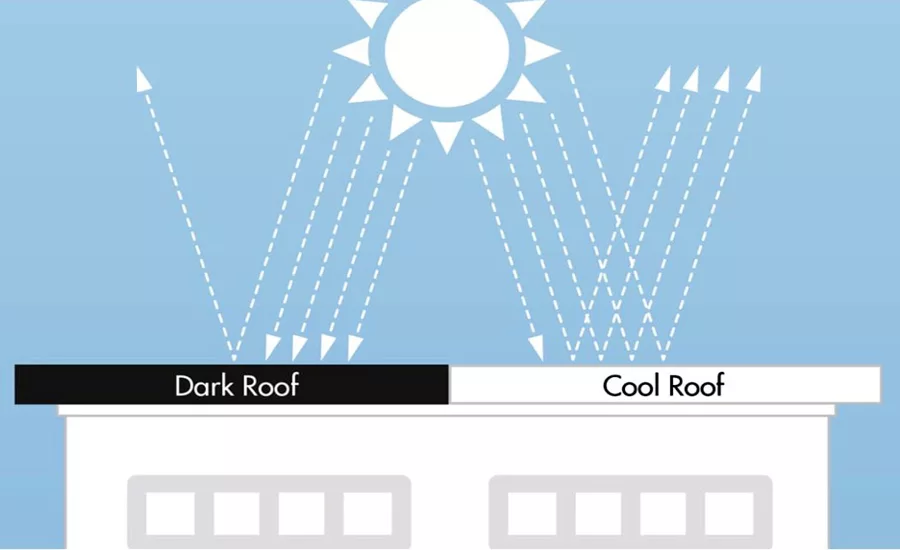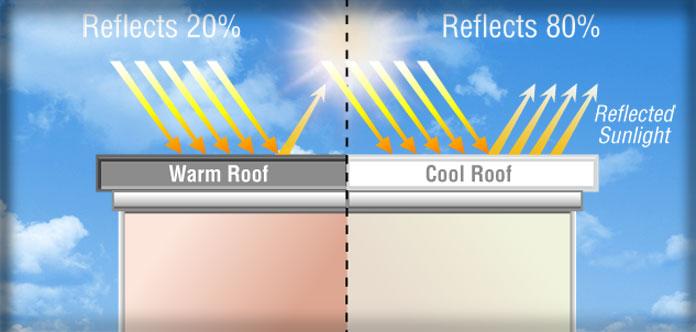Climate News
City of Austin Undertakes Study of ‘Cool Roofing’ to Mitigate Urban Heat
Data will be shared with Google and used to shape future urban planning decisions

The Department of Energy lists materials that reflect light best, including wood shingles, light-colored asphalt shingles, and clay tiles; an Energy Department study also demonstrated empirically that cool roofs can reduce the energy costs of a single-story building by up to 15%.
— Top image courtesy of GAF; story graphic courtesy of the Berkeley National Laboratory
The City of Austin, Texas, has reportedly agreed to share data with Google on the solar reflectivity of roofs across the city to understand better which areas of the community would benefit most from ‘cool roofs,’ a type of roofing that reduces heat in homes and neighborhoods.
As first reported by NBC affiliate KXAN, Laura Patiño, Austin’s chief resilience officer, after the city concludes its roofing study throughout its various neighborhoods, it plans to use that data to identify which areas of town would benefit the most from cool roofs; that data could be used for future climate policies. The data will be a part of Austin’s heat resilience playbook, described as a tool to reduce urban heat.
Solar reflectivity is a measure of how much sunlight a roof can reflect. A higher reflectivity score means a home absorbs less sun heat.
“From creating awareness and communicating and educating to residents what they can do to their homes, all the way to creating policies and new standards for how we build in our city that will make our city more adaptive to the changing environment,” Patiño explained to KXAN.
Learn more about cool roofing HERE.

The Department of Energy lists some materials that reflect light best, including wood shingles, light-colored asphalt shingles, and clay tiles. An Energy Department study also demonstrated empirically that cool roofs can reduce the energy costs of a single-story building by up to 15%.
“You’re talking about less energy consumption because when your home is reflecting that heat, it isn’t getting as hot inside, so you’re looking at lower electricity bills. You’re also looking at better quality of life,” Patiño explained.
The city did not say how long the study would take to complete.
Looking for a reprint of this article?
From high-res PDFs to custom plaques, order your copy today!








